Can You Really Make Yarn From Stinging Nettles???
YES!
One of my daughters tested it out to make sure it works and made some very nice yarn. Not enough to make a shirt (even for spiders), as I wasn’t about to ask her to process enough nettle for that. But she did go through the process and spun yarn just to show all of you.
The first step is to collect the stinging nettle plants! Fortunately, where we lived in Germany, they grew rampantly in our garden, around our little pond, and in the compost heap. Here’s what stinging nettle looks like when it’s still growing.
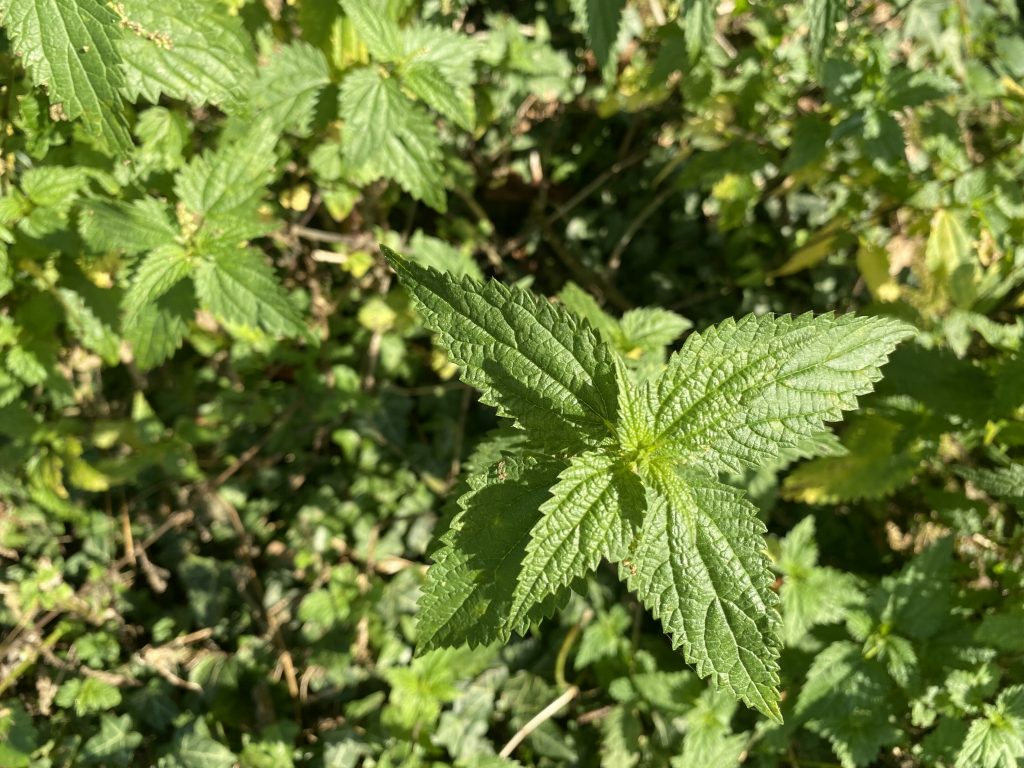
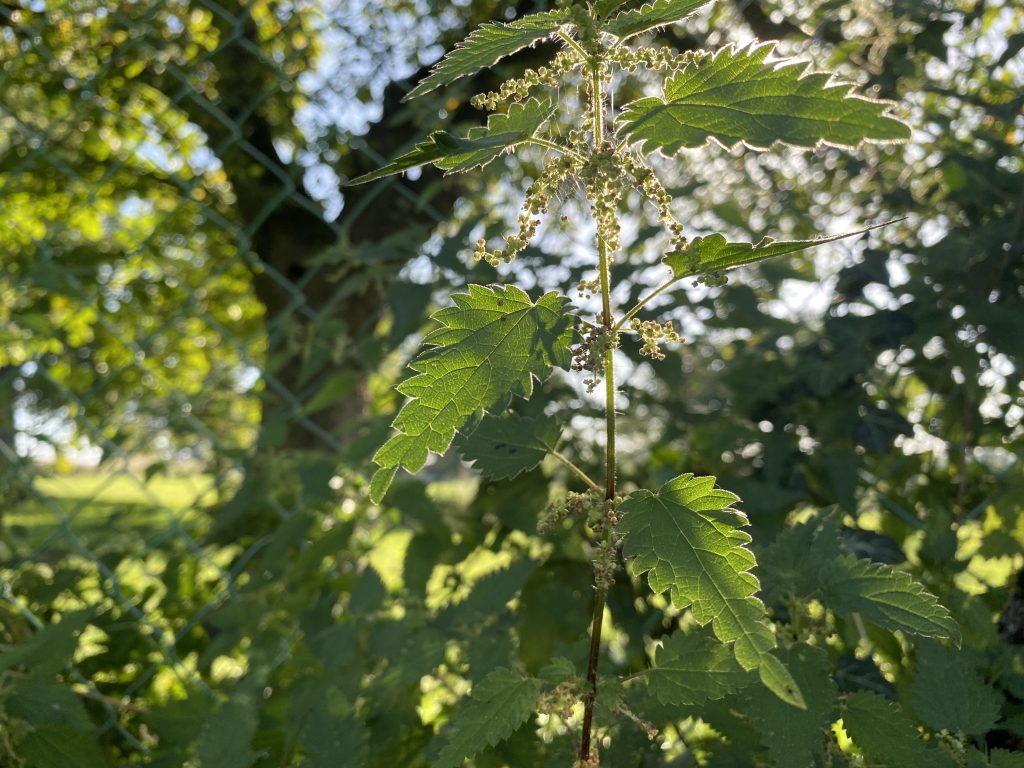
Just like Maeryn, we need to harvest it to turn it into nettle yarn! Wear gloves and long sleeves. Some people are more or less sensitive to the stings–for me, the stings hurt and would make the skin goosebumpy, sometimes with what looked like small raised bumps like hives, but it would disappear quickly. For others, it can redden and last for days.
After the nettle is harvested, you would remove the leaves and set the stalks to “ret” until they start to break down. Maeryn rets hers in the pond so that they don’t take as long, but you can also leave them on the grass so that they soak in the morning’s dew.
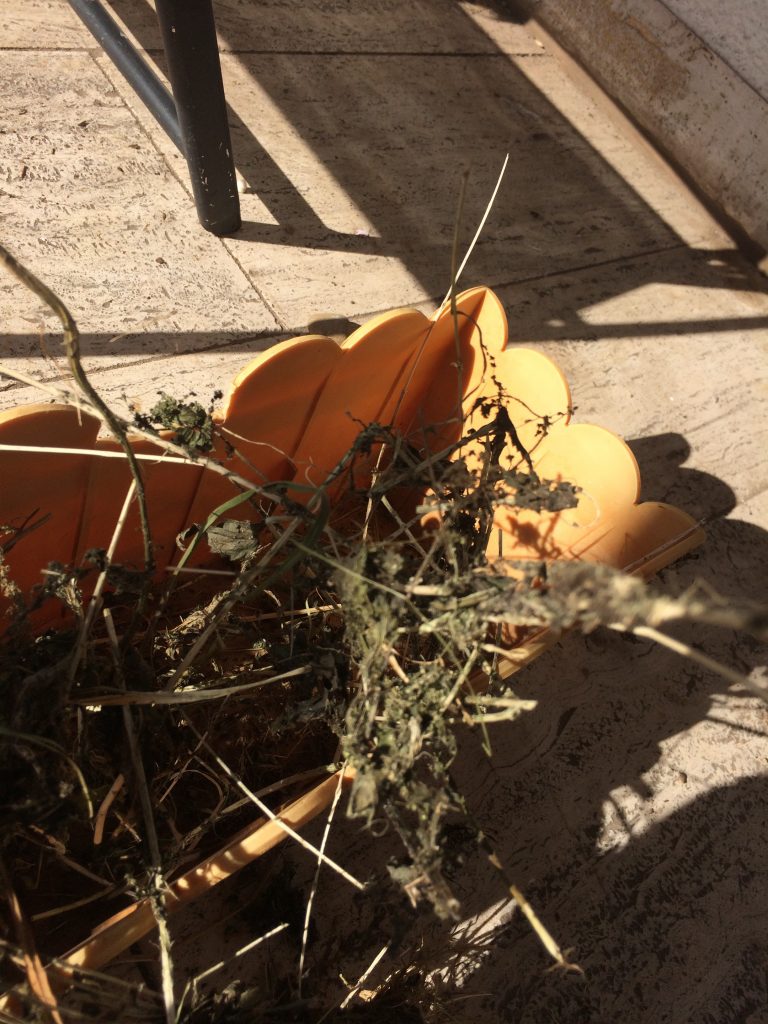
Ours still had some of the leaves attached as they soaked, so that’s what the extra green is around them.
After they soaked, my daughter left them out to dry. Once they were completely dry and brittle, it was time to break them open to find nettle fiber!
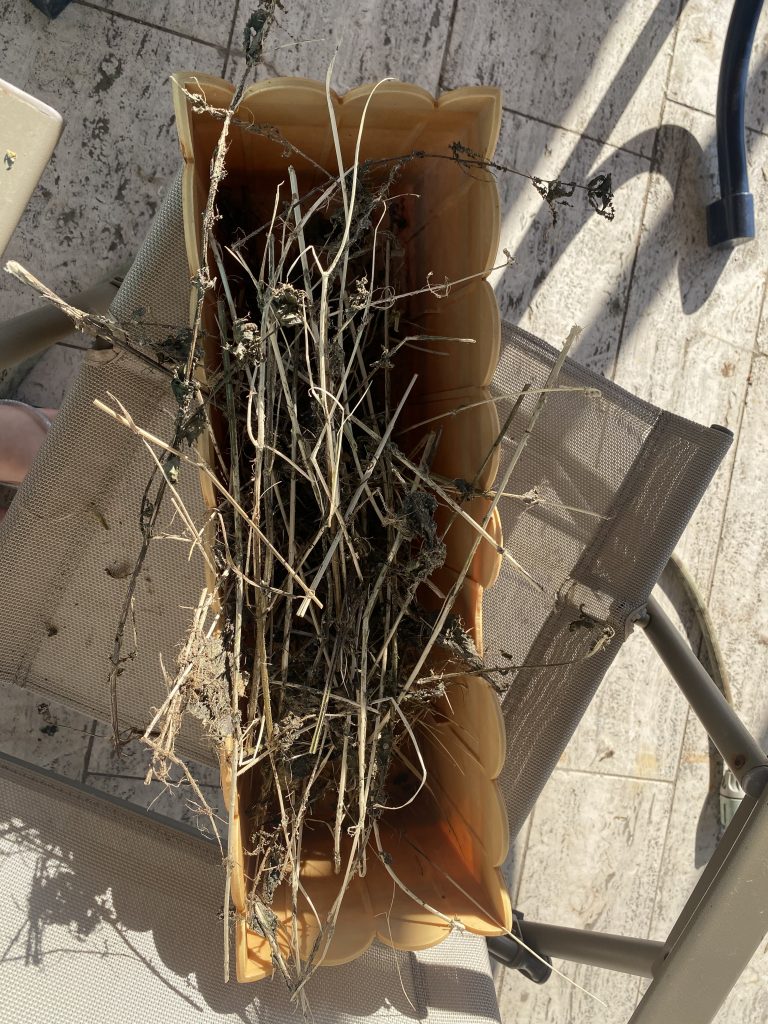
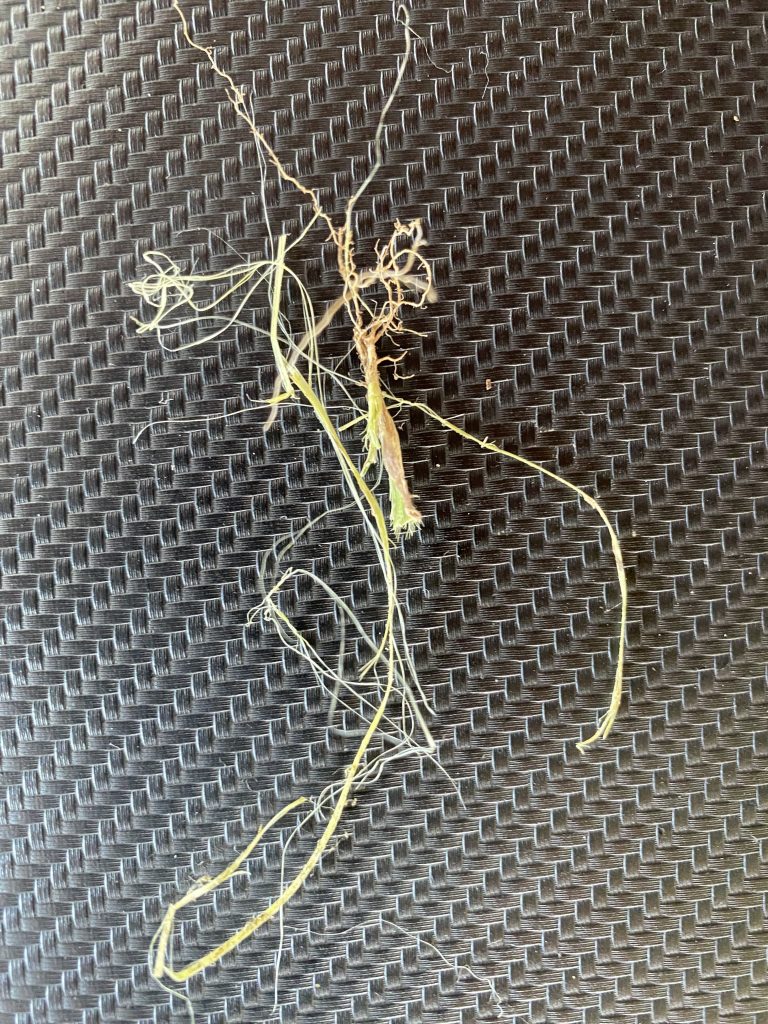
You see those little tufts? That’s the fiber!
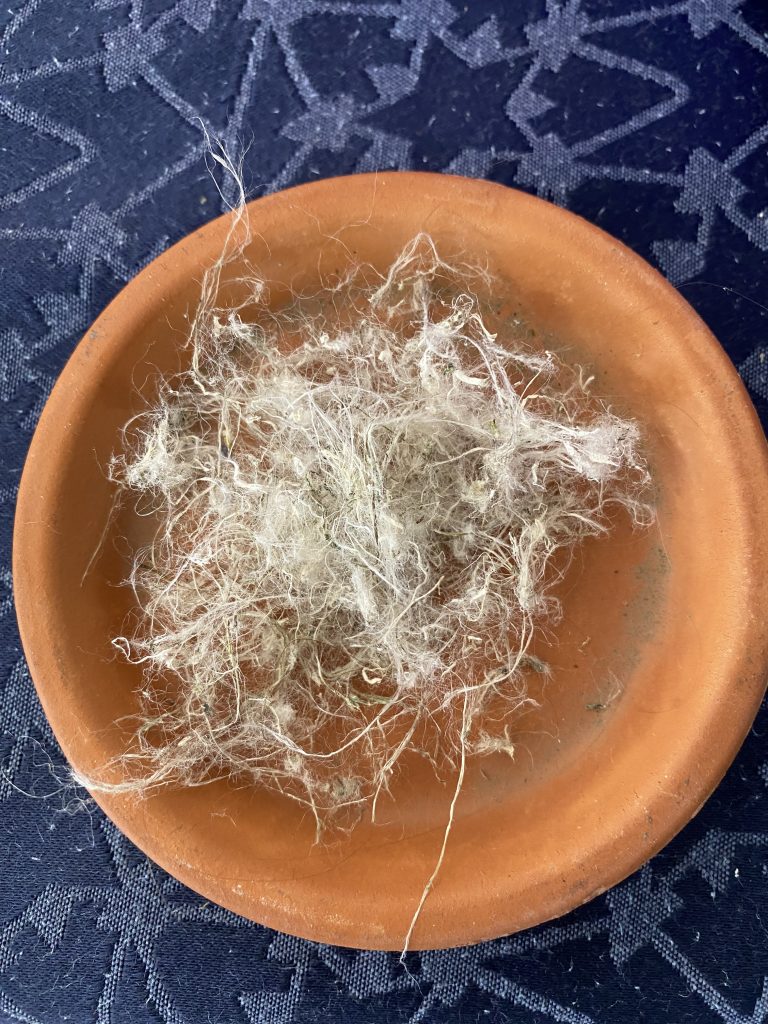
Here’s the fiber from lots of nettles all ready! Just imagine Joao getting ready to card handfuls of this fluff!
We didn’t have proper carding tools but made use of a hairbrush and a comb, I believe. The main idea with carding is to get the fibers all in the same direction.
Once they are, it’s time to spin!
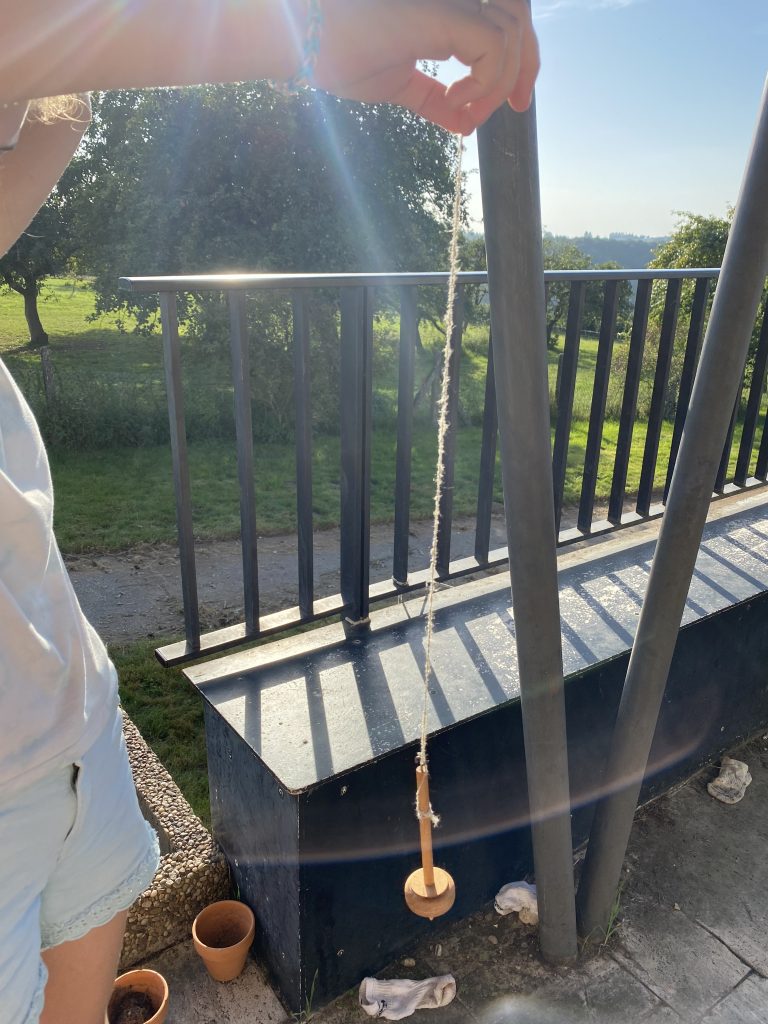
We have a drop spindle bought at a medieval market, so it’s something very similar to what Maeryn would have used to turn that fluff into yarn. You hold a bit of fluff to the spindle, drop it and set it spinning, and gradually pull in more fiber as it keeps spinning so that it spins it into a long strand of yarn.
And here’s a closer look at our final product!
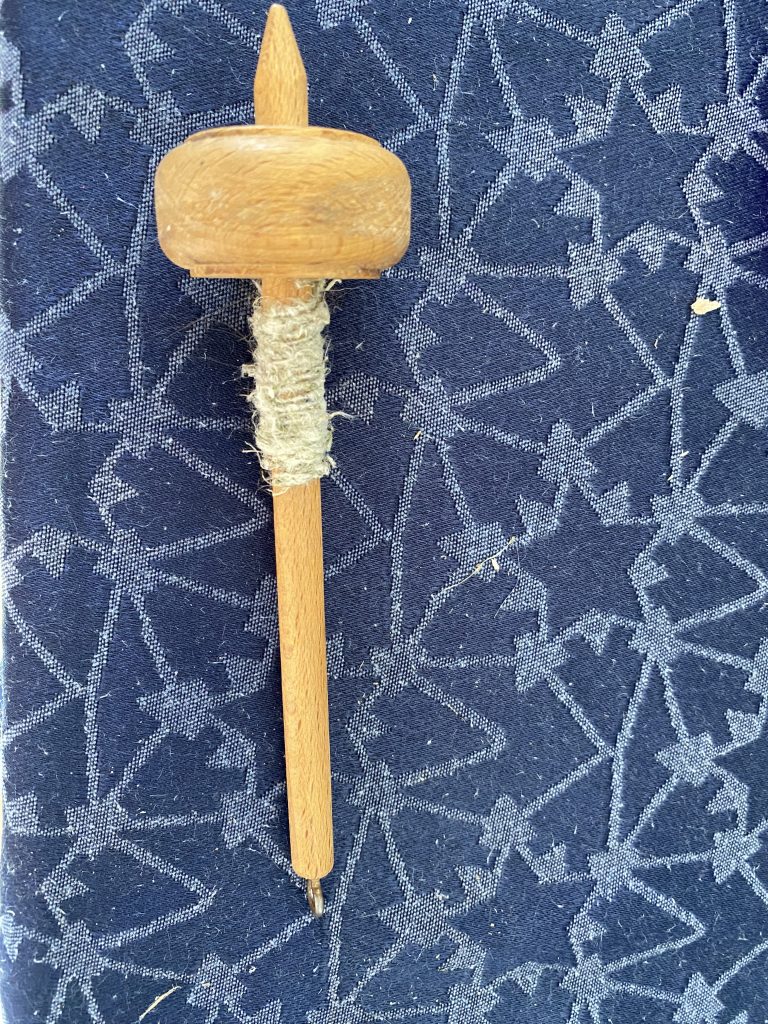
We didn’t make enough to knit any spider shirts from it, not to mention that I couldn’t find any spiders willing to stand still while they were inserted into a shirt one leg at a time. But you can see that we do end up with a yarn that you could use to knit with! It’s a little stringier than typical knitting yarn, a bit more like twine, so you can see why it would be a challenge for Maeryn!
Nettle is often combined with other fibers when made into yarn, which helps with the feel and consistency. But you can Google “knitting with nettle yarn” without the quotes to see samples of people’s knitting projects!
Not all people process their nettle yarn exactly the same way, but it really can be used to make yarn! Many books that take on the “Wild Swans” fairy tale don’t address how a plant with stalks and leaves are turned into knitted shirts, so I thought it would be a lot of fun to include the process in my retelling.
The gardener who speaks with Eadmund also mentions nettle cordage. Nettle can also be used to make cord, which can be useful for wilderness living. In that case, as far as I could find, the stalks aren’t typically retted. You break open the fresh stalks and remove the fibers, let the fibers dry, then twist them into cord.
Nettle leaves are also used to make tea, and both the leaves and roots are used to make medicine. Stinging nettle is a surprisingly useful plant, despite its sting!
I have a feeling, though, that Maeryn is happy enough to be on her way to a country where she might never have to see that plant again.
Want to know more about how to turn stinging nettle into yarn? Check out these sites:
More interested in nettle cordage?
There are also various instructional videos and spinning/bushcraft videos available online that show you the complete process.
